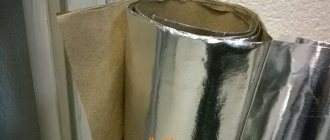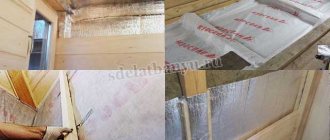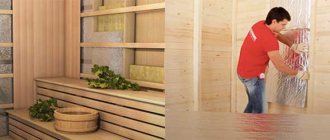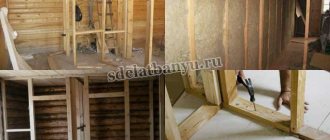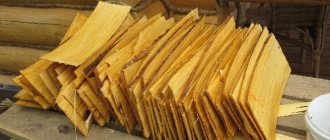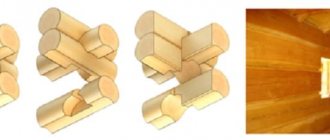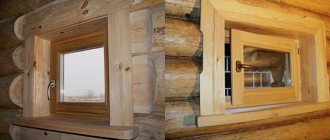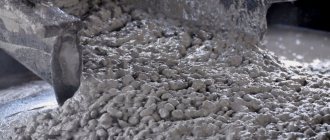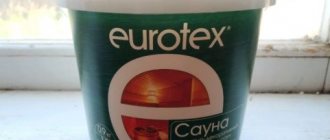Home — Products — Rolled aluminum — Aluminum foil
Aluminum foil refers to non-ferrous metal products with a flat shape and low thickness. The main advantages of the material are high structural properties, corrosion resistance, low specific gravity with sufficient strength and reflective qualities.
You can buy aluminum foil from 0.007 mm to 2.00 mm thick.
Foil is widely used as an insulating and packaging material, and due to its high electrical conductivity, it is often used in electrical engineering. Aluminum foil is used to produce composite insulating materials and cladding panels. The plasticity of aluminum allows the use of foil for forms with complex surfaces. The inherent metallic luster and malleability of pressure processing have made foil an attractive material for designers. High corrosion resistance and the ability to withstand prolonged exposure to high temperatures makes aluminum foil an indispensable insulating material in conditions of high humidity and temperature. The material can be embossed and varnished, which makes it possible to apply trademarks and markings to the packaging.
Aluminum foil differs in alloy grades, material condition, size and finishing accuracy. Products can also be divided by purpose: general and special.
Packaging properties of aluminum foil
Reliable barrier
The main property of aluminum foil is that it serves as a reliable barrier. Even the thinnest aluminum foil, just 6 micrometers thick - thinner than a human hair - provides reliable protection against light, oxygen, humidity, bacteria and unwanted odors. Therefore, products and medicines in aluminum packaging significantly increase their shelf life. Scientific research has shown that aluminum foil with a thickness of 6 micrometers (0.006 mm) can be considered an absolute barrier.
Quickly gains and releases heat
Aluminum foil conducts heat very quickly. This is a very important advantage, for example, when sterilizing milk, which then remains fresh for a long time even without a refrigerator. Rapid heat dissipation also reduces the process of cooling food for later storage.
Ideally plastic material
Aluminum foil is extremely lightweight and can easily be molded into different shapes and folded without any springback. This makes it an ideal packaging material for products such as oil.
Bright and attractive
Aluminum foil can be produced in different finishes - sparkling and matte. It can be painted with paints and varnishes, giving its silver surface a different texture - corrugated, ribbed or completely smooth. This foil is suitable for all printing methods and processes and therefore easily makes packaged products bright and attractive.
Boil, fry and bake
With aluminum foil you can cook, fry and bake both in the microwave and in a conventional oven.
Product packed in foil /1/
Main advantages
Aluminum foil for pipelines is characterized by a number of positive qualities:
- thermal resistance;
- resistance to corrosion;
- attractive appearance (can be used not only for production purposes);
- environmental safety - does not emit harmful substances when heated;
- There is no static electricity on the surface during operation.
We offer exclusively high-quality technical aluminum foil. Check the price of the product with our consultants; the cost depends on the volume of products purchased.
Food grade aluminum foil according to GOST 745
1 Classification of food grade aluminum foil
1.1 Based on manufacturing accuracy, foil is divided into the following types: N - normal accuracy; P - increased accuracy; B - high accuracy. 1.2 Based on the condition of the material, foil is divided into the following types: M - soft; T - hard. 1.3 Based on the condition of the treated surface, foil is divided into the following types: FG - smooth; FL - varnished on one side; FLL - varnished on both sides; FTL - varnished with thermovarnishes; FO - painted with colored varnishes or paints; FP - printed; FPL - printed on the front side and varnished on the back side; FPTL - printed on the front side and varnished with thermovarnishes on the back side; FLTL - with primer for printing on the front side and thermal varnishes on the back side. If the foil is embossed, then the designation “ts” is added to the above designations.
2 Assortment of food grade aluminum foil
2.1 The thickness of the foil and the maximum deviations in thickness correspond to those indicated in Table 1.
Table 1 - Foil thickness and maximum thickness deviations
2.2 Foil width - from 15 to 1500 mm. 2.3 Winding foil - onto metal bushings (spools) with an internal diameter of 34-36, 50-52, 68-70, 75-77 and 150-153. 2.4 The outer diameter of foil rolls is from 100 to 800 mm. 2.5 Example of foil symbol:
Smooth foil 0.050 mm thick, 100 mm wide, normal manufacturing accuracy, made of A5 aluminum, soft:
Foil FG 0.050 x 100 N A5 M GOST 145-2003
3 Chemical composition of food grade aluminum foil
3.1 Foil is made: 1) from aluminum grades AD, AD0 and AD1 according to GOST 4784-97; 2) made of aluminum grades A6, A5 and A0 according to GOST 11069; 3) from aluminum alloys АЖ0.6; AZh0.8 and AZh1 with the chemical composition indicated in Table 2; 4) from aluminum alloys 8011, 8011A, 1145 and 1050 with the chemical composition indicated in Table 3.
Table 2 - Chemical composition of aluminum and aluminum alloys for the manufacture of foil
Table 3 - Chemical composition of aluminum and aluminum alloys for the manufacture of foil (according to foreign standards)
1. Aluminum Foil – Multitalanted Lightweight Packing /GDA, Germany, 2014
Foil for pipe insulation
Aluminum foil 100 microns
It is a smooth polished aluminum foil 100 microns (0.1 mm) thick in rolls 1 meter wide (hard) and 0.5 meter (annealed), 10 m long (10 m2).
It is used as a reflective material in the construction of heated floors, stoves, boilers, air ducts, baths and saunas, and insulation for various purposes.
Foil for insulation. Characteristic.
- Temperature up to + 650 °C
- Reflects up to 97% of thermal radiation
- Retains heat in coolant
- Protects against fire
- Corrosion resistant
Aluminum foil is an excellent vapor barrier and, if necessary, can replace materials such as roofing felt, glassine, and bitumen paper, which emit various harmful substances when the temperature rises. Foil can be used as an independent reflective insulator, or in conjunction with other thermal insulation materials. The polished surface of aluminum foil, being an ideal energy reflector, significantly increases the efficiency of the insulation used.
Foil is used indoors and outdoors: for insulation and insulation of roofs, floors, attics, attics, walls, pipes, ventilation, ceilings, ceilings, bathhouses, vans, water heaters, boilers, wall sections behind heating radiators, and also as solar reflective panels , incl. on the windows. Recommended for use as reflective insulation in high temperature areas.
| Name | Size |
| Aluminum foil 100 µm (0.1 mm) | 1 m x 10 m (10 m²) |
| Aluminum foil 100 µm (0.1 mm) soft | 0.5 m x 10 m (5 m²) |
Aluminum foil 150 microns
It is a smooth polished aluminum foil 150 microns (0.15 mm) thick in rolls 1 meter wide, 10 m long (10 m2).
It is used as a reflective material in the construction of pipelines, chimneys, furnaces, boilers, air ducts, insulation for various purposes, and reflective panels.
Foil for insulation. Characteristic.
- Temperature up to + 650 °C
- Reflects up to 97% of thermal radiation
- Retains heat in coolant
- Protects against fire
- Corrosion resistant
| Name | Size |
| Aluminum foil 150 µm (0.15 mm | 1 m x 10 m (10 m²) |
Technical aluminum foil GOST 618-73 (from January 1, 2020 - GOST 618-2014)
Aluminum foil DPRHT 0.04 x 1000
It is a smooth polished aluminum foil 40 microns (0.04 mm) thick in rolls 1 meter wide, 10 m long (10 m2).
It is used as a reflective and steam- and waterproofing material in the construction of baths and saunas.
Aluminum foil DPRHT 0.08 x 1000
It is a smooth polished aluminum foil 80 microns (0.04 mm) thick in rolls 1 meter wide, 10 m long (10 m2).
It is used as a reflective and steam- and waterproofing material in the construction of baths and saunas.
| Name | Size |
| Aluminum foil 40 µm (0.04 mm) | 1 m x 10 m (10 m²) |
| Aluminum foil 80 µm (0.08 mm) | 1 m x 10 m (10 m² |
Features and Benefits
Taking into account the operational features of various bathhouse premises, thermal insulation made of foil must meet the following requirements:
- High vapor and moisture resistance;
- Excellent fire-resistant properties;
- Resistance to corrosion processes;
- High level of thermal reflectivity (up to 98%) thanks to the mirror top layer;
- Sufficient thermal conductivity;
- Resistant to high temperatures;
- Contains no toxic substances.
High vapor barrier characteristics prevent steam from escaping from the heated room and reduce the likelihood of condensation. This ensures long service life and excellent appearance of the insulation.
- Bath foil has the following advantages:
- Resistance to deformation and ductility during heating;
- Preservation of original consumer characteristics;
- Inert to ultraviolet radiation;
- Protection of premises from condensation, fungal formations and harmful organisms;
- Resistance to chemicals;
- Simplicity and accessibility of installation work;
- Durability, practicality and wear resistance;
- Hygienic and environmentally friendly;
- Affordable price.
Aluminum foil can withstand high temperatures up to 150 degrees, which, in combination with increased reflectivity, helps to effectively retain the generated heat indoors.
Such unique characteristics allow you to create the effect of a thermos in a bathhouse, so the material is ideal for insulating wall, ceiling and floor surfaces in steam rooms and technical rooms.
Tested Instances
For testing, we chose the following brands of foil: Paclan, Toppits, “Every Day”, “Sayanskaya Grill”, “Sayanskaya Universal”, “Food Foil”, “Chistulya”, “Moi Dom”.
The Toppits foil was boxed, everything else was shrink wrapped. All foil, with the exception of Everyday foil, contains a warning against contact with acid. The thickness is indicated only for Sayanskaya foil (20 microns and 11 microns). Of all the samples, when you first meet them, the Toppits foil with its honeycomb structure attracts attention. According to manufacturers, this improves its use. But, as it turned out during testing, in most standard situations, foil with embossing behaves approximately the same as without it.
All other foils are similar to each other, and if you put all the samples side by side, you will notice only a slight difference in the degree of gloss.
Aluminum bandage tape 0.25 x 33
It is an aluminum tape 0.25 mm thick, 33 mm wide, roll length 90-100 meters, cut to customer size. It is used for fastening corrugated foil in hot and cold water supply and heating networks, as well as for fastening smooth foil, fiberglass, and fiberglass to thermal insulation.
The aluminum bandage tape is secured with a buckle lock to tie and secure the tape.
To fix the aluminum banding tape, no special tool is required; everything is done manually and does not require special skills.
How to properly store food in foil
Most housewives use aluminum foil for its intended purpose: to preserve the freshness of products brought from the store after their packaging has been opened. A piece of this or that product is simply wrapped in several layers of foil and put in the refrigerator. In fact, you can wrap it in one layer, the main thing is that the joint of the sheets is airtight. The air and vapor permeability of even the thinnest foil is almost zero. A number of manufacturers write that you should not use foil to store sour and salty foods, since the metal may oxidize. But we conducted a simple experiment: we placed pieces of foil from different manufacturers in ordinary table vinegar. After 3 hours, we washed the leaves and looked. None of them showed obvious signs of oxidation. Conclusion: for a short time (a couple of hours), acidic foods can be stored wrapped in foil. For longer storage, it is better to use cling film or a container with a lid.
Strength
To test the strength, we packed a beet tuber in one layer of foil and twisted the ends tightly. Two samples - “Sayan Universal” and “My Home” - were torn, so I had to do a second take. Our expectations that some sample would burst from the steam were not justified; all the packages remained intact.
For another strength test, we wrapped a piece of foil around an ordinary glass and trimmed the edges.
Then a glass of water was poured into each mold. Only the Toppits and Sayanskaya grill foil successfully passed this test; all the others sooner or later unraveled and the water flowed out of them.
How to bake in foil correctly
Another popular use of foil is for baking. In this case, it is better to fold the sheet of foil in half - so that it does not tear and for better heat transfer. There is no need to tightly seal the edges - there is a possibility, albeit small, that the bag could be torn by steam.
There is a lot of debate among housewives about which side - glossy or matte - to place food on. By and large, there is no difference: the reflectivity of the glossy side is 88%, and the matte side is 80%, that is, the speed of cooking will be approximately the same. We conducted an experiment: for a delicious salad, we baked two beets of the same size, wrapped in foil differently. An hour after being in an oven preheated to 180 degrees, the temperature of the beets in foil, wrapped with gloss on the outside, was 99.6 °C; beets wrapped in foil with the matte side out - 101 ° C. So if you want to cook the dish a little faster, wrap the foil with the matte side out.
But you shouldn’t cook in the microwave in foil. Aluminum does not transmit electromagnetic waves, and the potential difference between the foil and the metal parts of the stove or different pieces of foil will cause the metal to spark at the points of contact. If you need to heat something in foil, it should be unrolled before heating.
Another use for foil is to make casserole dishes out of it. To do this, it is better to use thick foil or fold thin foil in several layers.
We tested food foil for ease of use (is it easy to unwind from a roll), strength (whether it breaks when wrapped), “stickiness” (whether food sticks to it when baked), fire resistance - that is, those qualities that housewives usually pay attention to and summer residents.
